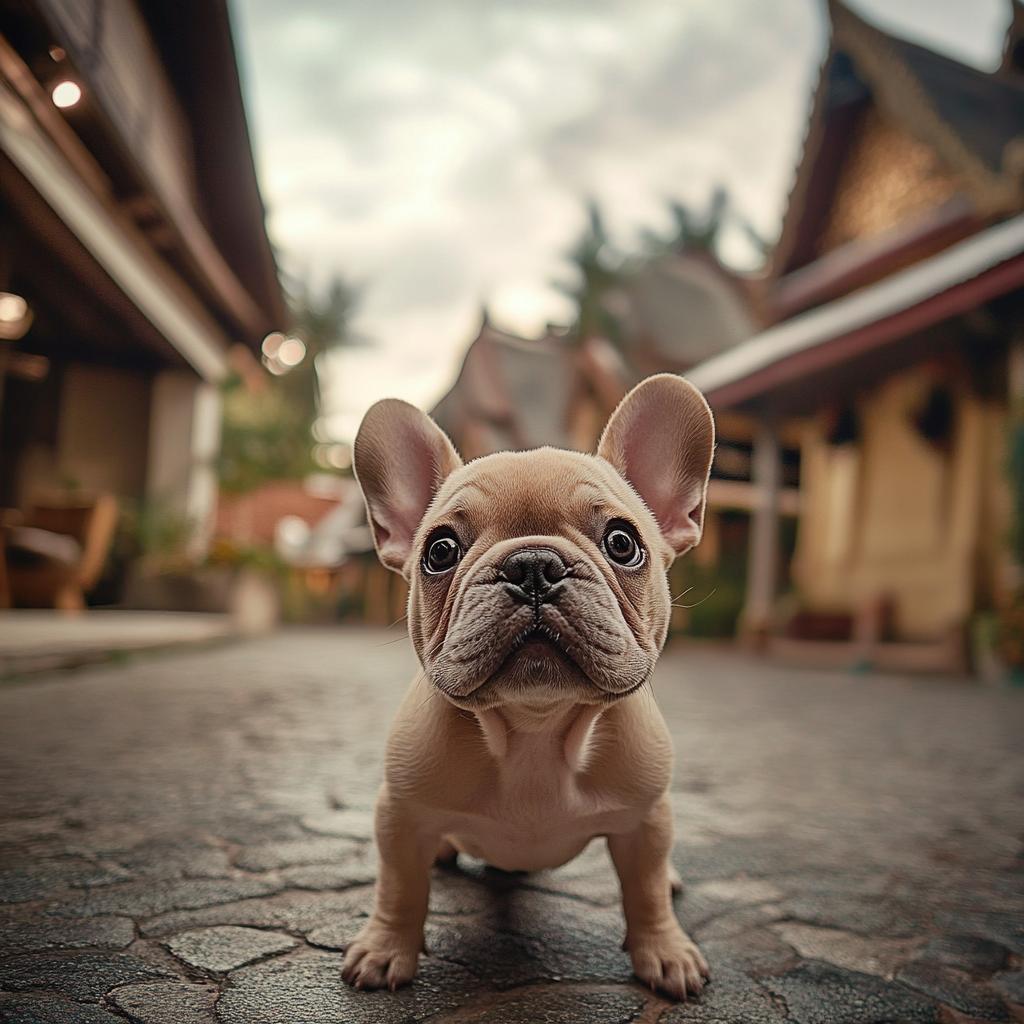In a heartwarming tale that stretches the bounds of science and love, Kanjanrat Sakdigratanasiri, a devoted animal enthusiast from Ban Pong district, Ratchaburi province, has undertaken an extraordinary journey to bring her cherished canine companion back to life. This remarkable story unfolds with Pha Phang, a lively five-month-old French Bulldog at its center, representing Thailand’s first foray into the genetically engineered world of cloned dogs.
Pha Phang isn’t just any pup; she’s a clone of Kanjanrat’s beloved pet who passed away due to Canine Cushing’s syndrome. Despite the inevitable heartache, Kanjanrat was not ready to say farewell to the emotional support and companionship that her dear Pha Phang provided during life’s challenges. She ventured into the realm of science with determination, eventually investing 6 million baht in the pioneering cloning endeavor.
The story begins with a question: how do you deal with the loss of a pet that was more like family? For Kanjanrat, the answer was simple but profound—bring her back. Embarking on this scientific odyssey, she teamed up with Dr. Supasek Sonjit, Thailand’s premiere veterinarian and cell specialist capable of performing such groundbreaking work. With his expertise, cells were gathered from Pha Phang’s body and sent across the seas to South Korea, where Dr. Hwang Woo Suk, a renowned cloning expert, worked his magic.
Yet, the path to success was fraught with challenges, as is often the case when pushing the boundaries of what’s possible. The first few attempts to bring Pha Phang’s clone into the world faced obstacles; initial puppies struggled with the basic act of breathing. It was a testament to perseverance and innovation that finally, on the fifth attempt, a healthy puppy emerged—greeting the world with a lively bark.
When the cloned Pha Phang reached four months, she had her poignant reunion with Kanjanrat. Their bond reawakened in an instant, as if no time had passed since they’d last been together. Not only did the little bulldog exhibit familiar mannerisms, but she also showed an impressive understanding of Thai commands, hinting at a memory all her own. Although her coat flaunted minor differences, the essence of Pha Phang seemed to transcend genetics—a canine legacy renewed.
Of course, such an unusual step was not without its critics. Some viewed Kanjanrat’s decision as an inability to move on, while others raised ethical questions about the implications of cloning. In response, Kanjanrat stood firm, her actions driven not merely by sentiment but by an acknowledgment of the advancements in science that allowed for a return to the purest of bonds. Her plea was one of understanding and respect for choices deeply personal.
Through the storms of differing opinions, this tale of Pha Phang serves not only as proof of scientific possibilities but as a reflection on the intricate tapestry of love and loss. Kanjanrat’s decision wasn’t rooted in extravagance but an emotional investment in happiness, proving that love, in all its forms, deserves to be celebrated.
As for the original Pha Phang, she remains preserved—a testament to where this story began—a gemstone of memory in Kanjanrat’s cherished collection. When the time is right, she will find her final resting place, at home, where the heart never forgets.


















I think this whole cloning thing is creepy. Letting go is a natural part of life.
But technology has advanced so much. Why not use it if it brings someone happiness?
We should be careful not to play god. What’s next, cloning humans?
Kanjanrat does seem truly happy. Isn’t that what matters most?
What if it was your dog? Would you feel the same?
This story is beautiful. Science and love working together for a greater good.
But at what cost? The ethical implications are huge.
Every new technology has its critics. Remember when people resisted organ transplants?
6 million baht is a lot of money for a clone. Could’ve helped a lot of homeless dogs instead.
True, but it was her money to spend how she wished.
There are just better ways to spread love, but I see your point.
I wish I could do the same with my late cat. This story gives me hope.
But would the clone really be the same as your original cat?
It may not be exactly the same, but it’s a connection to the past.
How does this even work? Are the clones exactly like the originals?
Genetically, yes, but there can be slight differences in personality.
This raises a lot of questions about cloning ethics. We’re touching new grounds.
Absolutely, but we can’t ignore the potential benefits of controlled cloning.
I suppose, but we need strict regulations.
I hope people realize cloning isn’t a solution to grief. It might delay true healing.
Cloning seems like something out of a sci-fi movie. Are we moving too fast?
The story is inspiring, but I wonder if it’ll become more common as technology advances.
This article made me think about my own dog and how much she means to me.
If cloning becomes cheaper, I might actually consider it for my golden retriever someday.
At some point, we have to ask if cloning pets is taking resources away from other scientific advancements.
You can’t put a price on love. Kanjanrat should be celebrated for her courage.
But no one talks about how the cloned pets might also suffer health issues.
Wouldn’t it be amazing to have your childhood pet come back? That nostalgia is priceless.
Is it possible the cloned dogs will outlive their original versions?
In a way, this cloning story shows the lengths we go to avoid saying goodbye.